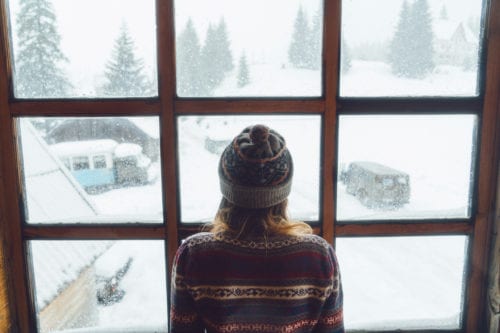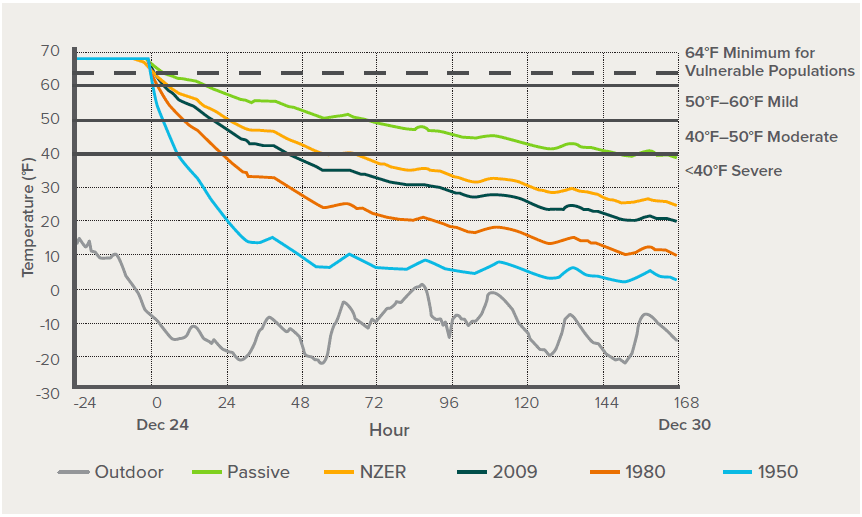
Report | 2020
Hours of Safety in Cold Weather
A Framework for Considering Resilience in Building Envelope Design and Construction
Winter storms are increasing in severity because of climate change. When winter storms are in full blast, millions of people take refuge inside to stay warm. But what happens to indoor temperatures if there is a power outage or if a furnace stops working?
Homes vary widely in their ability to maintain comfort during these events. Improving our homes to withstand extreme weather events—through better airtightness, insulation, and windows—is an essential strategy for climate change adaptation (while providing lower utility bills and other benefits)—but to this point, we haven’t had a way to tangibly quantify the resilience benefit yielded by these improvements or to compare the extreme weather performance between homes.
This insight brief addresses this knowledge gap by outlining the concept of hours of safety—the duration of time that homes can be expected to provide safe temperatures when the power goes out. The buildings studied include a typical home built in the 1950s, a typical home built in the 1980s, a home that meets the 2009 IECC Code, a net-zero energy ready home, and a house that meets Passive House standards.
